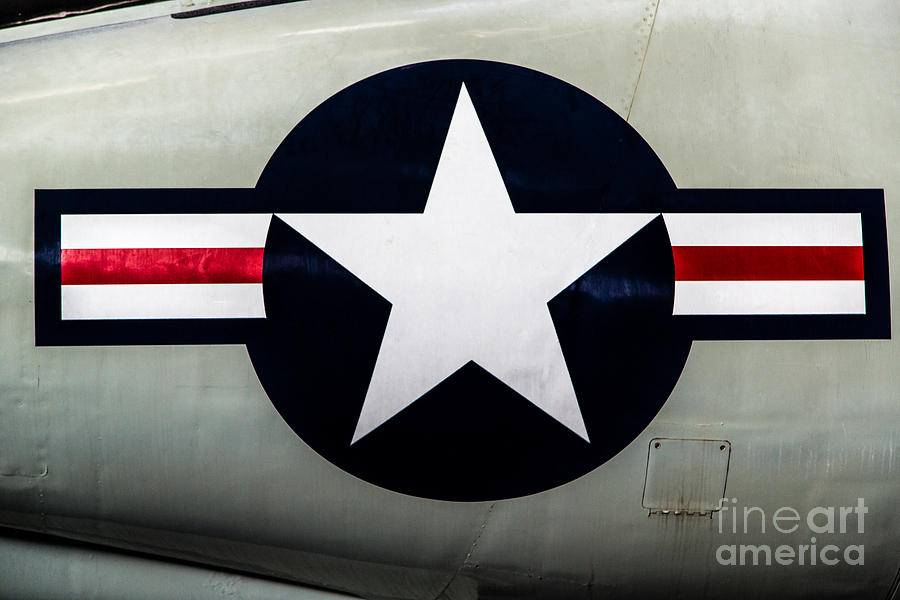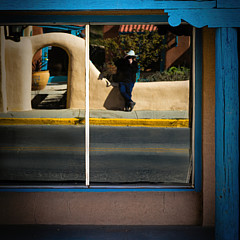
Stars and Bars

by Jon Burch Photography
Title
Stars and Bars
Artist
Jon Burch Photography
Medium
Photograph - Digital Capture
Description
The construction of military airfields after the Pearl Harbor Attack that caused the entry of the United States into World War II resulted in the construction of the Smoky Hill Army Airfield on 2,600 acres southwest of the Salina, Kansas. The first unit associated with the airfield was the 376th Base Headquarters and Air Base Squadron, whose engineers first laid out the base beginning in April 1942. Construction began in May 1942 with the aid of nearly 7,000 construction workers. The airfield was officially activated on 1 September 1942 and was assigned to the II Bomber Command, Second Air Force.
Named the Smokey Hill Air Force Base and later renamed Shilling, the base became a former United States Air Force Base located three nautical miles southwest of the central business district of Salina, Kansas.
During World War II, the "Smoky Hill Army Airfield" became significantly historic as it was in the first group United States Army Air Forces B-29 Superfortress bases for initial training on the aircraft in the summer of 1943. Along with Walker Army Airfield near Victoria, Pratt Army Airfield near Pratt and Great Bend Army Airfield near Great Bend the initial cadre of the 58th Bombardment Wing was formed. The 58th Bomb Wing was the first B-29 combat wing of World War II and engaged in the first long-range strategic bombardment of the Japanese Home Islands beginning in March 1944 from bases in India.
Later, during the postwar years and the Cold War era, the base was one of the initial airfields of the new Strategic Air Command in 1946, and the United States Air Force upon its establishment in 1947. It became a major Strategic Air Command base that hosted two B-47 Stratojet Bombardment Wings, and the headquarters of an Air Division and an ICBM squadron. When it closed in 1965, it reopened as Salina Municipal Airport.
Enough construction was completed that the 376th moved into facilities on 10 September. The first aircraft to arrive, Boeing B-17 Flying Fortresses, arrived later that month and were assigned to the 346th Bombardment Group. The mission of Smoky Hill AAF was that of a Second Phase Heavy Bomber Operational Training Unit. Combat groups formed in First Phase training were reassigned to the airfield, training focused to teamwork of the combat crew was stressed: bombing, gunnery, and instrument flight missions were performed by full crews. Upon completion, the groups moved on to third phase the final level of training before overseas deployment to the combat theaters.
The 366th was joined by the 400th Bombardment Group in the training mission at Smoky Hill AAF on 31 July 1943. The 366th concentrated on B-17 Flying Fortress training; the 400th on B-24 Liberator training.
The 58th Bombardment Wing was moved to Smoky Hill Army Air Field on 15 September 1943 from Marietta, Georgia and the mission at the airfield changed from heavy bomber training, to organizing and getting into combat the new B-29 Superfortress. The first Superfortress wing initially had 5 groups - the 40th, 444th, 462d, 468th, and 472d. The 472d Bomber Group was destined to remain at Smoky Hill AAF as the B-29 Overseas Training Unit, and the others were to be deployed to India. It was found that the Operational Training for B-29 groups was much more complex than the B-17/B-24 training program developed by the United States Army Air Force. It usually took 27 weeks to train a pilot, 15 to train a navigator, and 12 to train a gunner. The complexity of the B-29 was such that a lengthy process of crew integration had to take place before combat deployment could begin. By the end of December 1943, only 73 pilots had qualified for the B-29 and very few crews had been brought together as a complete team.
Also development problems with the B-29 meant that only 16 of them were really airworthy. Most of the others were in Army Air Force modification centers, located near the Bell-Marietta and Martin-Omaha plants and at air bases in Kansas, undergoing a series of modifications and changes necessitated by the lessons of air combat over Europe. Also, engine fires were still plaguing the B-29 program.
President Franklin D. Roosevelt wanted the B-29 bombing raids against Japan to start by January 1944. However, delays in the B-29 program forced the Chief of the Army Air Forces, General Henry H. Arnold to admit to the President that the bombing campaign against Japan could not begin until May 1944 at the earliest. Alarmed at the slow pace of bringing adequate numbers of the Superfortress into service, on 27 November 1943, General Arnold set up a new organization to take responsibility for the overall control of the Superfortress units. This was to be the XX Bomber Command. At the same time, a new wing, the 73d Bombardment Wing, was added to the XX Bomber Command with four more groups to absorb the second batch of 150 Superfortress, and three additional airfields in Pratt, Great Bend, and Walker, Kansas were made part of the B-29 development Program. The resulting burst of activity that took place between 10 March and 15 April 1944 came to be known as the "Battle of Kansas". Beginning in mid-March, technicians and specialists from the Boeing Wichita and Seattle factories were drafted into the modification centers to work around the clock to get the B-29s ready for combat. The mechanics often had to work outdoors in freezing weather, since the hangars were not large enough to accommodate the B-29s. As a result of superhuman efforts on the part of all concerned, 150 of the B-29's had been handed over to the XX Bomber Command by 15 April 1944. These aircraft were assigned the first B-29's to squadrons within the 58th Bombardment Wing and dispatched them immediately to India, to take part in Operation Matterhorn.
The crew training program at Smoky Hill and the other Kansas B-29 bases was one of the more difficult aspects of the entire B-29 program. Because of the complexity of the B-29 aircraft, a lengthy process of crew integration was required before combat operations could begin. There was no time to start from scratch, so volunteers were called for from B-24 crews returning from operations in Europe and North Africa. In addition, there were very few bombers were ready to receive them. At that time, there was only one Superfortress for every twelve crews, and most crews had to train on Martin B-26 Marauders or Boeing B-17 Flying Fortresses. Many gunners did not even see their first B-29 until early 1944. As production ramped up at Boeing-Wichita, Seattle and Bell-Marietta, more and more aircraft begin to be delivered though out 1944.
Some digital effects were applied to this original image after the photograph was made. No electrons were harmed during the transition. Ordered images will not contain the FAA watermark.
Image copyright 2016 Jon Burch Photography
Uploaded
May 2nd, 2013
Embed
Share

























































